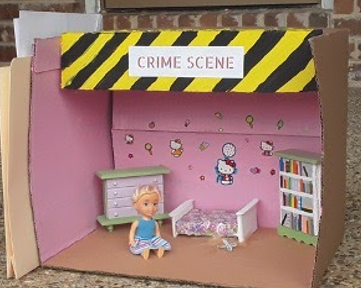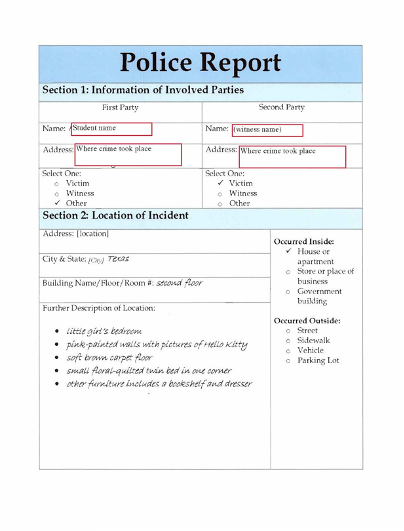18 Multimodality
A multimodal composition will:
- Use two or more of the five primary communication modes (aural, gestural, linguistic, spatial, and visual).
- Understand how media differ from the communication modes.
First, what is multimodality? Multimodality refers to the five primary modes or ways by which we communicate: aural, gestural, linguistic, spatial, and visual. Think of it this way: If you were composing a message on a social-media platform like Twitter or Instagram, instead of “relying only on alphabetic letters, [you would] include voice messages, images, photographs, music, emoticons, web links, and other . . . multimodal elements to make [your] points” (Ball and Loewe 311). The reference to “alphabetic letters” refers to linguistic communication modes, while the other options draw primarily on visual and aural modes. The key point here is that you would very likely use several communication modes in your post, not just because you can on those platforms but because the combination suits your audience, purpose, and context (i.e., the rhetorical situation).
All communication is multimodal. In this textbook, for example, we communicate with you via words on a page or screen; our modes are linguistic and visual. On the other hand, you may be listening to these words, which we would describe as an aural-linguistic mode. Most communication also includes spatial modes that communicate meaning: On the page or screen, for example, letters are grouped together as words, with space between them; paragraphs are separated in ways that enhance communication, too, along with section headers and titles. In face-to-face interactions or on Zoom, we would speak these words aloud but also add gestures that communicate additional information or cues; such an interaction combines aural, linguistic, and gestural modes.
Multimodality an important skill for your genre toolbox. By choosing the mode(s) best suited to your rhetorical situation, you improve your chances of communicating persuasively and effectively. Being able to choose and mix modes makes you a more skillful communicator. In the advertisement genre, for example, you may be familiar with television ads calling on you, the viewer, to help save abandoned or abused animals. What kind of music typically accompanies the visual and alphabetic elements of such an ad? Sad music. Would these ads work if the music was happy and upbeat? Remember that we have expectations about genres; we expect the music and images in such an ad to evoke sad emotions. In these ads, sound/music, images, and words work together to communicate a message.
Modes and media are different but related concepts. A medium is a singular material or interface through which we communicate a message or messages. Examples of media (the plural of medium) include newspapers, paintings, social-media apps, Zoom, or even your course learning management system. In a sense, media are the materials that lie between the communicator and the communication. A mode, on the other hand, refers to the channels or resources through which media are sent. For example, have you ever seen words or images etched in chalk on a sidewalk? The sidewalk and the chalk are the media; the words and images used communicate the creator’s message through the visual and linguistic modes. In the case of this textbook, the medium is the computer screen; the mode is visual and linguistic (and possibly aural, if you’re using a screen reader or reading aloud).
What’s it like to consider the modes of your composition? Elsewhere in this chapter, we discuss genres that, when considered as written compositions, employ at least two modes (visual and linguistic). Other multimodal possibilities for getting your points across include infographics, photographs, charts and diagrams, slideshows, presentations, podcasts, animation, videos, and so much more. You can use these multimodal genres to supplement your written, “alphacentric” essays, or expand them into new compositions on their own.
For example, in “The Scissors Incident,” a crafted project featured in the 2020-2021 FYC eReader, the student multimodality transformed a narrative written earlier in the semester. For a remix project later in the course, she pondered ways to present her project in more than two modes. One aspect of the resulting project was a diorama she made of a “crime scene.” What three modes can you identify in a photograph of her project?

When the student presented this project, she used the premise that her “audience” of classmates were investigators attending a “crime” update. First, she provided her audience with a police report documenting the crime, then she talked to them as if she were the chief investigator. Her presentation was aural, linguistic, visual, spatial, and gestural. The diorama is visual, linguistic, and spatial in its use of modes, and so were the handouts. The entire project exemplifies multimodal composing as a practice, a skill you use every time you communicate.

Let’s review. First, modes are the primary ways we communicate—aural, visual, linguistic, spatial, and gestural. Second, all communication is multimodal; that is, all communication combines at least two modes in order to deliver or create meaning. Third, by understanding the modes best suited to your audience, purpose, and situation, you can communicate persuasively and effectively. These factors are why multimodal composing is such a valuable skill to employ across genres.
In the next section, we’ll discuss the typical writing genres you might encounter in a first-year writing classroom or in your college writing experience. While these genres are not the only genres you might encounter, they do capture the range of writing styles that you might need. In each section, we’ll provide a description of the genre, audience expectations, genre significance, and examples.
What are some examples of this genre?
